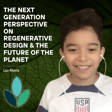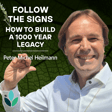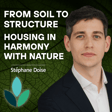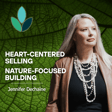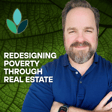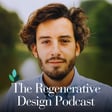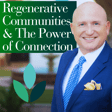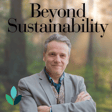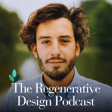
Ep. 15 Jeremy McLeod – Sustainable Architecture
“What do you want to leave behind? What legacy do you want to leave people with?”
What if the homes and buildings we live in could help fight climate change? In a world rapidly shifting due to environmental changes, how can architecture not just adapt but actively contribute to a regenerative future? What if we could redesign our cities to combat climate change, improve urban living, and provide long-term financial benefits—all at once? Could the solution be as simple as rethinking our buildings and parking spaces?
As our world rapidly evolves, cities are at the heart of that change. Urban planning is no longer just about providing homes and infrastructure—it's about shaping environments that tackle climate change, promote sustainability, and create thriving communities. But how do we bring innovative ideas to life in a world resistant to change?
Jeremy McLeod is the founder and director of Breathe Architecture in Australia, a company dedicated to creating high-quality, sustainable design solutions. He's also the co-founder of Nightingale Housing, a not-for-profit organization committed to providing affordable, sustainable housing in Melbourne. Jeremy is at the forefront of using architecture as a tool to protect both people and the planet.
Doing good for the planet and doing good in business don’t have to be mutually exclusive. By aligning your mission with sustainable practices, not only can you build a successful brand, but you can also create lasting impact for future generations.
Website: https://www.breathe.com.au/
Email: jeremy@breathe.com.au
Instagram: @breathearchitecture
Explore these valuable resources to further your journey in regenerative design:
Discover more about Regenerative design at Paulownia Landscape Architects. https://www.paulownia-la.com/.
Dive into the Twelve Laws of Nature and unlock the secrets of harmonizing with our planet at https://www.12lawsofnature.com/.
Fulfill your garden aspirations with expert guidance from the Garden of Your Dreams masterclass at https://www.gardenofyourdreams.com/.
Ready to take actionable steps towards your dream garden? Book a complimentary 30-minute training session with Matthieu for immediate results: https://calendly.com/garden-of-your-dreams.
